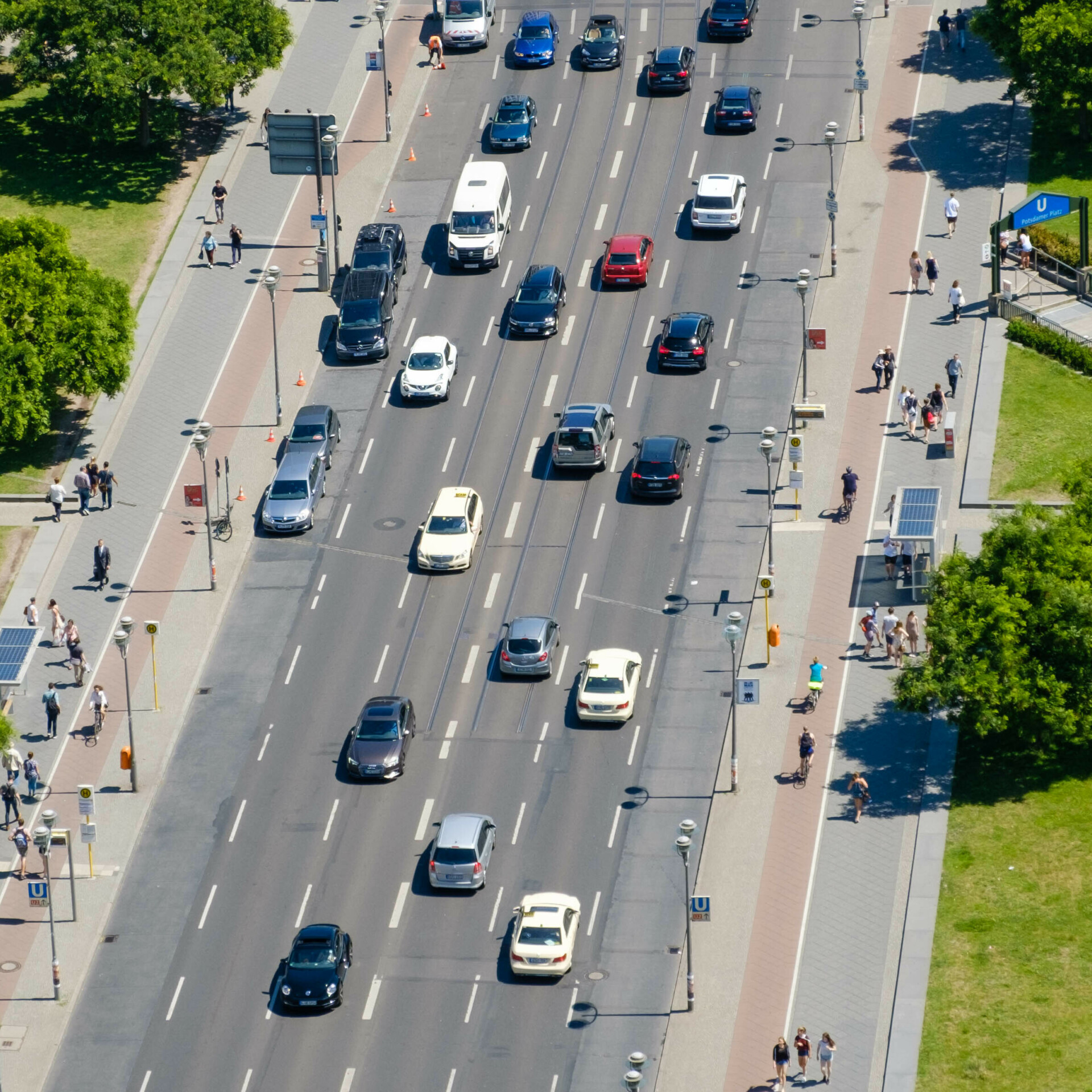Read next
Future mobility — market analysis, part 2
Autonomous locomotion in everyday life
Will packages be delivered by anonymous robots in the near future? And when will we be able to take an air taxi to town? We will encounter autonomous means of transport more and more frequently in our everyday lives as well. An overview of the current status of a variety of autonomous vehicles.



© iStock.com/hanohiki
Cars
Level 4 autonomous cars will be able to drive in predefined areas of public roads in Germany as soon as 2022. The corresponding law went into effect in July 2021. Level 4 cars are fully automated and can handle the majority of driving situations independently. They can merge onto the freeway, signal and overtake and navigate parking garages and spaces autonomously, without being monitored by a human driver. Only level 5 cars are more autonomous: Here, passengers don’t have to do anything, nor do they have any way to intervene in the driving situation.
Even though this is bringing autonomous cars within reach, acceptance for this technology among the population still has room for improvement. Fear of unreliable technology is especially high. The vehicles already work very well in test situations at present, but they have to be absolutely reliable under difficult conditions as well. Particularly in poor weather or light conditions, the sensors that monitor the surroundings are often not reliable enough. In addition, the installed systems — such as LIDAR, radar, 3D maps and navigation — not only have to work on their own but also cooperate seamlessly.
The Fraunhofer Institute for Cognitive Systems IKS offers solutions that ensure that autonomous vehicles work reliably
despite poor conditions or errors and do not endanger anyone. Structured safety analysis or intelligent cross-validation can review and safeguard the machine perception.
Last-mile delivery robots
There is a large shortage of drivers in German road freight transport: According to estimates by the German Federal Association of Road Haulage, Logistics and Disposal (BGL), there are currently around 60,000 vacant jobs in the sector. The problem is made worse by a lack of new workers: Around 30,000 drivers leave the industry every year, but only half of them are replaced. At the same time, online orders, and thus the number of necessary deliveries, continue to grow.
The most expensive and time-intensive part of the shipping process for companies is the “last mile”. 53 percent of all delivery costs are incurred by the final stage, to the customers’ front doors. “Last-mile delivery robots” promise a remedy. These driverless, autonomous transport vehicles deliver goods and parcels from the local distribution center to their final destination. The robots come in different forms: Small, slow robots can travel on sidewalks. Autonomous delivery vans use streets. Delivery drones are an attractive choice due to their speed and capacity to reduce road traffic.
Several obstacles still have to be overcome before they can be used, however. The development of the robots is very cost-intensive. In particular, the LIDAR sensors that serve to scan the local environment are still too expensive at present. In addition, the robots have a blind spot, which could become a problem when they have to share sidewalks with pedestrians. The sensors also have to be adapted to a variety of weather conditions. Based on the current state of technology, fully autonomous robots are not expected before 2030.
Air taxis
Fly over jammed city roads in just a few minutes? This dream might soon become reality with autonomous flying taxis. They are usually powered by electricity and have vertical takeoff and landing capability. Although the industry is still in an early stage, the air taxi market is highly competitive. According to a study by Roland Berger, more than 110 companies around the world were working on the development of passenger drones in February 2020. As soon as air taxis can fly completely autonomously, prices will drop and they will become available to a broad public. They will be used wherever taking the direct air route can save a lot of time. This could be the case in areas with little developed infrastructure, as well as in congested major cities.
Before the air taxis can take off, however, there are still many open questions. The biggest hurdles involve the construction of the urban infrastructure for takeoffs and landings and controlling the air traffic. Solutions also have to be found for the technical challenges: The storage capacity of the batteries has to be improved to cope with the high power consumption. The systems for situational awareness and collision avoidance have not matured enough yet either.
When we will see the first air taxis also depends on how quickly regulatory barriers can be overcome. Since the air taxis will fly through urban areas at lower altitudes than conventional aircraft, there are privacy concerns. Near major airports, in particular, it will be a challenge to adapt laws and regulations to enable congruent operation of both types of aircraft in the same airspace.
Above all, however, for air taxis to become an established means of transport, it will be essential to address safety concerns and the accompanying acceptance among the general public.


